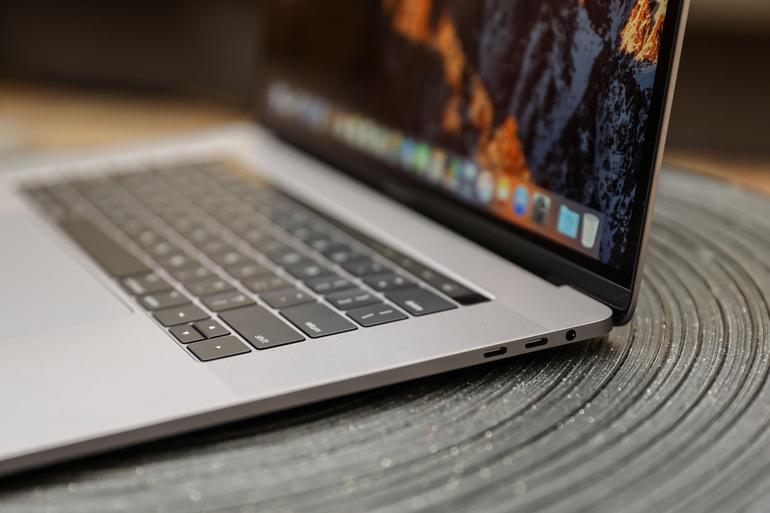

Image: Sarah Tew/CNET
Rumors suggest that the upcoming tenth-generation iPhone 8 — let’s call it that for now although it seems unlikely that it will be the final name — will retail for over $1,000, with some going as far as to suggest that the starting price — yes, you read that right, starting price — will be in the region of $1,200.
You can buy a MacBook pro for that.
Could the iPhone 8 seriously cost as much as a MacBook Pro? Let’s find out.
See also: How to make sure your charger or power bank doesn’t blow up your expensive smartphone
I’ve seen a lot of pricings for the iPhone 8 bandied about, but most of them seem to be just numbers plucked out of the air with little or no data to back them up. So, in an attempt to bring a little grounding to these rumored pricing, let’s try to pull together some data to see if there’s some reality to these pricings.
Let’s start off by looking at Apple’s existing iPhone line up. And just a cursory look shows that an iPhone 7 Plus with 256-gigabyte of storage will currently set you back $969.
Just with that bit of information, all of a sudden that $1,000+ price tag doesn’t seem so crazy.
But let’s leave that uber-pricey iPhone 7 Plus and take a dive into what makes modern flagship smartphones expensive. The best way to do this is to take a look at the teardown bill of materials (BOM) for some flagship devices. Let’s take a look at the BOMs for the iPhone 7 and the Samsung Galaxy S8. A look through these will show you that the bulk of the cost of a smartphone is made up of the display, the mainboard, and the camera module.
But I want you to pay attention to three things:
- The BOM costs are only a fraction of the retail price of the handsets (remember that R&D and all the other myriad costs associated with bringing a product to market aren’t included in this costing — however it’s likely that Apple is making around $250 profit per iPhone)
- The whopping cost of the 5.77-inch AMOLED display in the Samsung Galaxy S8 ($85, compared to $39 for the iPhone 7)
- That the total BOM and manufacturing cost of the iPhone 7 comes to $220, while the handset retails for $649
The takeaway here is that an OLED display is going to be expensive for Apple (and buyers), and more so if it’s going to have components such as the Touch ID sensor embedded into it.
Even given how ruthlessly Apple drives down supply chain prices, OLED displays are going to be expensive given that not many companies have the capacity to produce high volumes, and given the poor yield.
If Apple wants an OLED display — especially one that has components integrated into it — then that’s going to weigh down the price tag considerably.
Another thing to bear in mind is that Apple has no problem charging customers an arm and a leg for things that at a production level only cost a few dollars. 32-gigabytes of storage and 2-gigabytes of RAM in the base iPhone 7 costs Apple under $17, and while Apple charges an extra $100 for a storage bump to 128-gigabytes, that’s not costing Apple anywhere near that price (the actual price is likely under $20).
But is it possible to bring the bill of materials up to a point where Apple could charge $1,000+ for the iPhone 8?
Yes, it is.
Remember, the BOM usually falls around a third of the retail price, so in reality we only need to bump the BOM price up to around $330, and remember that an OLED display could easily add $45 to that $220 for the iPhone 7, and perhaps as much as $55 for the costs of integrating components into the display, that now only leaves us looking to add about $60 to the cost.
Throw in the improved cameras needed for AR and retina/facial scanning, and more RAM and we’re not far.
Throw in wireless charging and we’re in that $330 range ballpark. Comfortably.
If we assume that the tenth-anniversary iPhone isn’t going to be offered in a measly 32-gigabyte offering, then that gives Apple the ability to slap the premium storage tax onto the iPhone 8.
Then, consider that this is the much-hyped tenth-anniversary iPhone, so there’s room for a hype tax.
So, yes, the iPhone 8 could retail for $1,000. Easily. A starting price of $1,200 would be pushing it based on what the (think) we know about the iPhone 8, but if Apple ships the iPhone 8 with 256-gigabytes of storage as the baseline, then even this isn’t a crazy price (well, OK, it is a crazy price, but not for what you’re getting).
Anticipating the question on how Apple could justify charging $1,000 for a smartphone with a BOM of $330, remember that this price doesn’t include costs such as R&D (this iPhone seems like it’s going to be a radical departure from the existing line up, both in terms of cosmetic appearance and user experience, and that costs money), marketing, stores, and so on. Based on past figures and estimates, I’d say that these costs would add some $330 to the BOM price.
But that does mean that Apple would be making around $330 per iPhone 8 sold. Which isn’t bad at all.
The real question isn’t whether Apple could attach a $1,000+ price tag to an iPhone, but whether people will pay that price. And if they are willing to pay, how long until we see other manufacturers offering their own “limited edition” smartphones with eye-watering prices?
See also:

